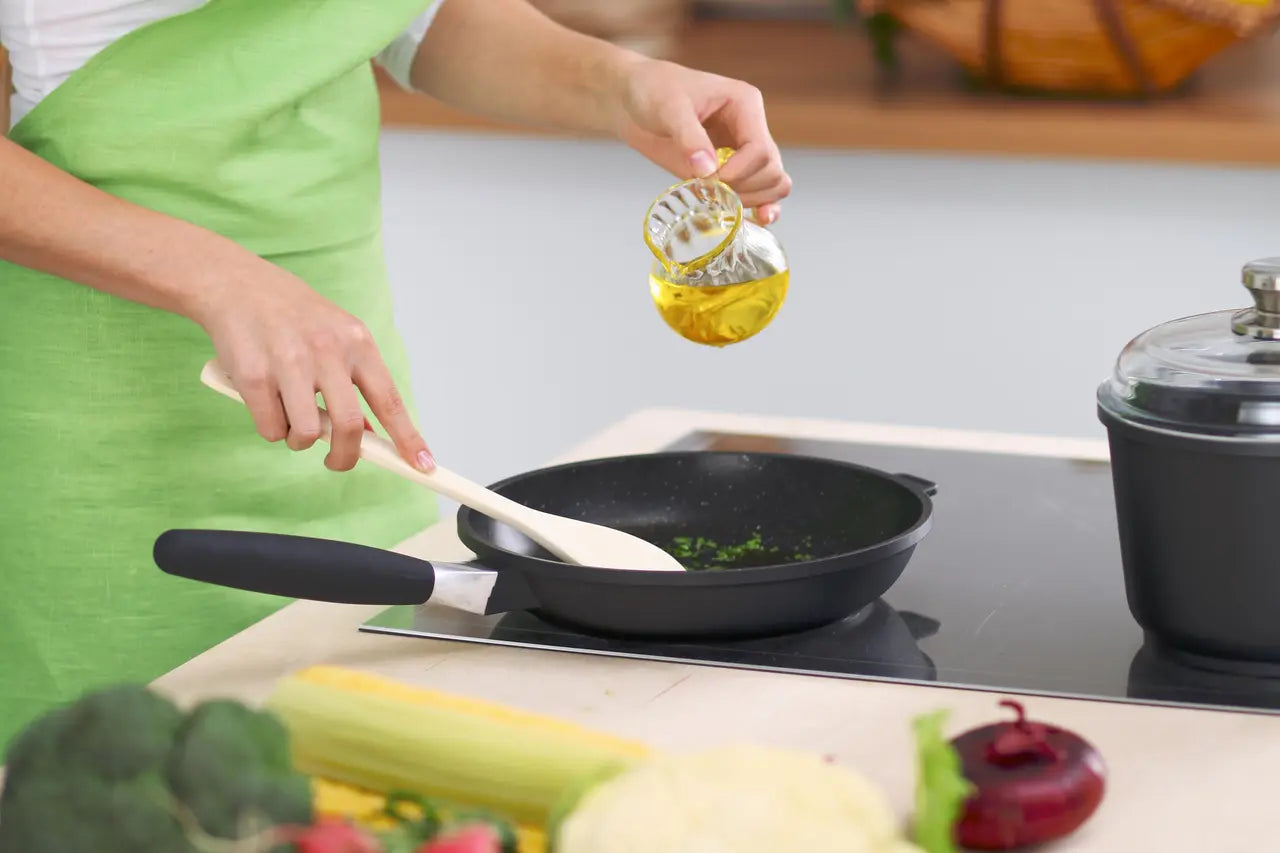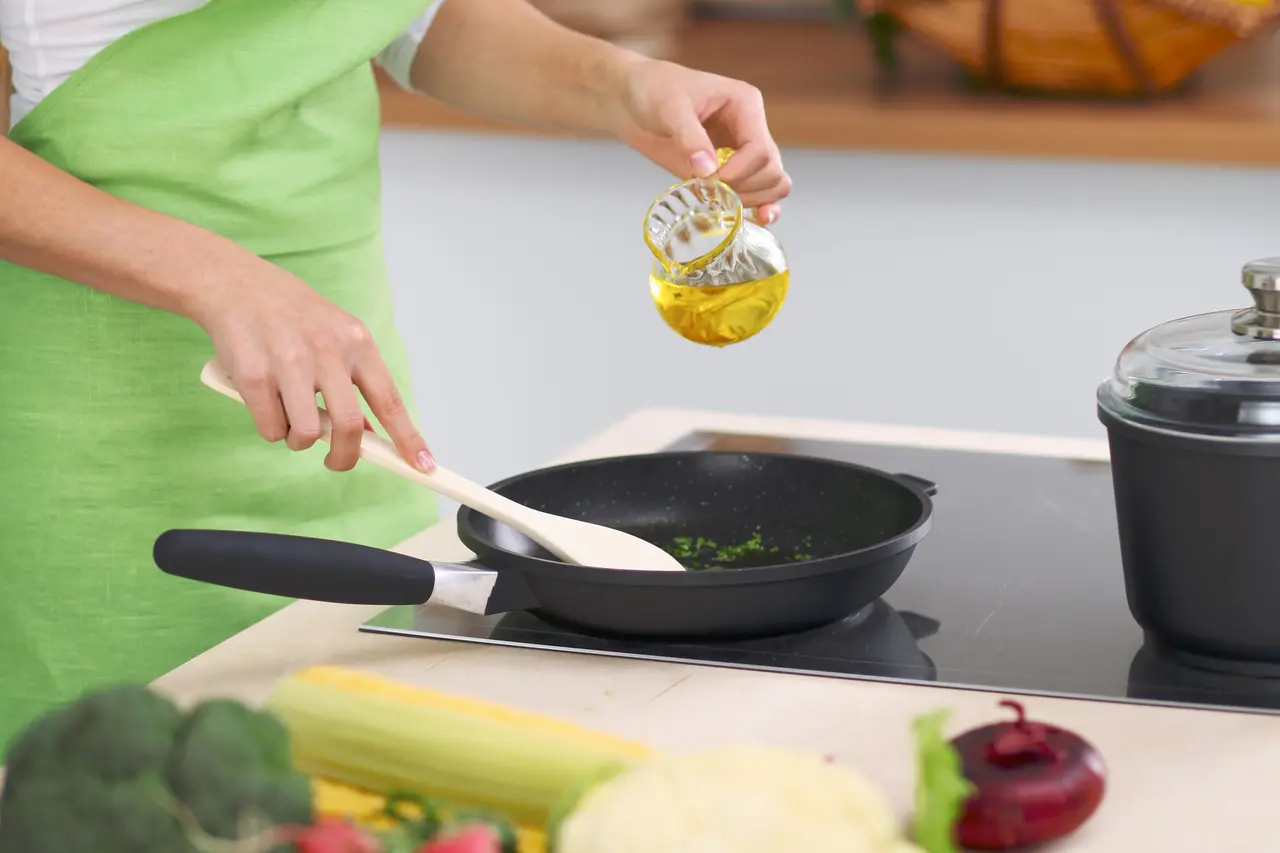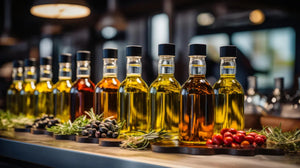Diving into the world of premium olive oils can transform your cooking from simple to spectacular. With their rich flavors and health benefits, these oils are a staple in many kitchens. Here’s how you can make the most out of them in your dishes.
Understanding Premium Olive Oils
Premium olive oils, especially those labeled as extra virgin, are known for their impeccable quality and rich, varied flavors. They are produced through a meticulous process that preserves the integrity and natural characteristics of the olive, resulting in an oil that is not only healthier but also enhances the flavors of your dishes. To truly appreciate premium olive oils, one must first recognize the diversity among olive varieties, each offering distinct tastes and aromas ranging from fruity and spicy to floral and buttery.
Understanding the smoke point of olive oil is crucial for cooking. While it’s a common myth that olive oil has a low smoke point and is thus not suitable for cooking, many high-quality extra virgin olive oils have smoke points that are suited for various cooking methods, including frying. Evaluating the smoke point helps safeguard the oil’s health benefits and flavor, ensuring that the oil complements your cooking rather than overshadowing it.
The production locations of olive oils also play a significant role in their characteristics. Oils from the Mediterranean region, for instance, are celebrated for their profound history and distinct profiles that the local climate, soil, and olive varieties have shaped. Greek, Spanish, and Italian olive oils each bring something unique to the table, from peppery to more rounded and smooth flavors, enhancing the culinary experience of dishes.
Choosing the Right Olive Oil for Your Dish
Selecting the right premium olive oil for your dish involves understanding the flavor profiles of the oil and how they complement specific ingredients. For a dish that requires a bold, robust flavor, such as grilled meats or hearty stews, a peppery and pungent olive oil might be ideal. In contrast, for a light salad dressing or to subtly enhance a fresh bread dip, a milder, fruitier variety would be preferable. Gaining insight into the tastes and uses of different olive oils is akin to mastering a vital cooking skill.
Taste testing different olive oils can significantly influence your choice. The flavors can range widely, influenced by the type of olives, the region they were grown in, and the production process. Engaging in olive oil tasting sessions, either at specialty shops or at home by purchasing a variety of oils, can be an enlightening experience, educating your palate to discern and appreciate the subtle differences and nuances each type of olive oil brings.
When choosing olive oil, freshness is key. Premium olive oils should be consumed within a year or two of bottling to enjoy the fullest expression of their flavor profile. Picking the right oil thus also involves checking harvest dates on labels—a practice encouraged by the International Olive Council. This ensures you’re using olive oil at its peak quality, embodying vibrant flavors that can elevate your dishes.
Incorporating Olive Oil in Cooking vs. Finishing
The distinction between cooking with olive oil and using it as a finishing touch can profoundly affect the outcome of a dish. Cooking allows the flavors of the oil to meld with the ingredients, creating a cohesive taste experience. Utilizing olive oil as a cooking medium—whether for sautéing, frying, or roasting—imparts a depth of flavor that can transform a simple recipe into something spectacular.
Conversely, using premium olive oil as a finishing oil can add a burst of flavor and a touch of luxury to a completed dish. A simple drizzle over grilled vegetables, pasta, or even ice cream can elevate the taste and introduce new dimensions of flavor. The diversity in olive oil flavors means there’s an oil for every type of dish, from sweet to savory, each enhancing the final presentation with its unique profile.
Balancing the use of olive oil in cooking and as a finisher is an art form. While high heat can diminish some of the delicate flavors of a premium oil, it can also create new taste compounds that enrich dishes. Experimentation is key, as is understanding the smoke point and selecting an oil that aligns with your cooking method.
Creative Uses of Olive Oil Beyond Sautéing
Premium olive oils offer a vast playground for culinary creativity beyond traditional sautéing. For instance, olive oil can serve as the foundation for delicious marinades and dressings, imbuing proteins and salads with rich, nuanced flavors. Its versatility also extends to baking, where it can replace butter in cakes and muffins, offering a moist texture and a unique taste profile that pairs wonderfully with citrus and herbs.
Another intriguing application is in desserts. Olive oil can be the secret ingredient in ice cream, providing a silky texture and complex flavor notes that complement fruits, chocolates, and nuts. It’s also a key component in making olive oil-based chocolates, a gourmet delight that reveals how versatile olive oil can be.
Infusing olive oil with herbs, spices, or citrus peels opens up a whole new dimension of flavor. Infused olive oils can be used as dips, in cooking, or as dressings, imparting subtle nuances or bold accents to dishes and elevating simple ingredients to new culinary heights.
Pairing Olive Oils with Foods
The art of pairing olive oils with food is akin to pairing wine with dishes; it can enhance flavors and elevate the dining experience. For robust dishes with bold flavors, choosing a strong, peppery olive oil can match the dish’s intensity. Meanwhile, delicate dishes, such as mild fish or fresh vegetables, benefit from a lighter, fruitier oil that complements without overpowering.
The regionality of olive oils can also guide pairings. An Italian extra virgin olive oil, with its grassy notes, pairs wonderfully with pasta and tomato-based dishes, embodying the essence of Italian cuisine. Similarly, a Spanish olive oil, often fruitier and more robust, is a perfect match for grilled meats and vegetables.
Experimentation and personal taste play significant roles in discovering the perfect olive oil pairings. Undertaking this culinary exploration can unlock new flavor profiles and transform even the most basic dishes into a memorable meal.
Storing Premium Olive Oils
Proper storage is essential for maintaining the flavor and nutritional quality of premium olive oils. Keeping olive oil in a cool, dark place, away from heat sources and sunlight, helps to preserve its delicate flavors. Understanding how to store olive oil can extend its shelf life, ensuring that you’re always cooking with the freshest oil possible.
Bottling also affects olive oil’s longevity. Dark glass bottles or tin containers are ideal as they protect the oil from light. After opening, ensuring the bottle is tightly sealed after each use minimizes exposure to oxygen, which can accelerate the oxidation process and lead to rancidity.
For those who invest in premium olive oils, considering the bottle size can be practical. Smaller bottles reduce the time the oil is stored after opening, ensuring that you’re utilizing the oil while it’s at its peak of freshness.
Mastering the Art of Olive Oil Tasting
Olive oil tasting is an enriching experience that hones the palate and deepens one’s appreciation for this versatile ingredient. Just like wine, olive oil tasting involves observing the oil’s color, sniffing its aroma, and savoring its flavor. Through tastings, one can discern the subtle differences between varieties and begin to identify preferences for specific types of oils.
Hosting an olive oil-tasting party can be a delightful way to explore the world of olive oils with friends and family. Offering a selection of bread for dipping, along with notes on the origins and characteristics of each oil, can transform the tasting into an educational culinary adventure.
The journey into mastering the art of olive oil tasting doesn’t end with recognizing flavors; it also extends to understanding the stories behind each bottle—from the types of olives used to the terroir and the people behind the production. This knowledge enriches the tasting experience, adding depth and connection to each drop of oil.
Embracing the Versatility of Premium Olive Oils
Incorporating premium olive oils into your cooking is not just about adding a touch of luxury; it’s about enhancing flavors, benefiting from their health properties, and experimenting with new dishes. Whether you’re dressing a salad or crafting a culinary masterpiece, the quality of olive oil can make all the difference. Start with these steps, and you’ll soon discover the full potential of premium olive oils in your cooking. Find more ways to elevate your meals with these luxurious oils at Redstone Olive Oil.







